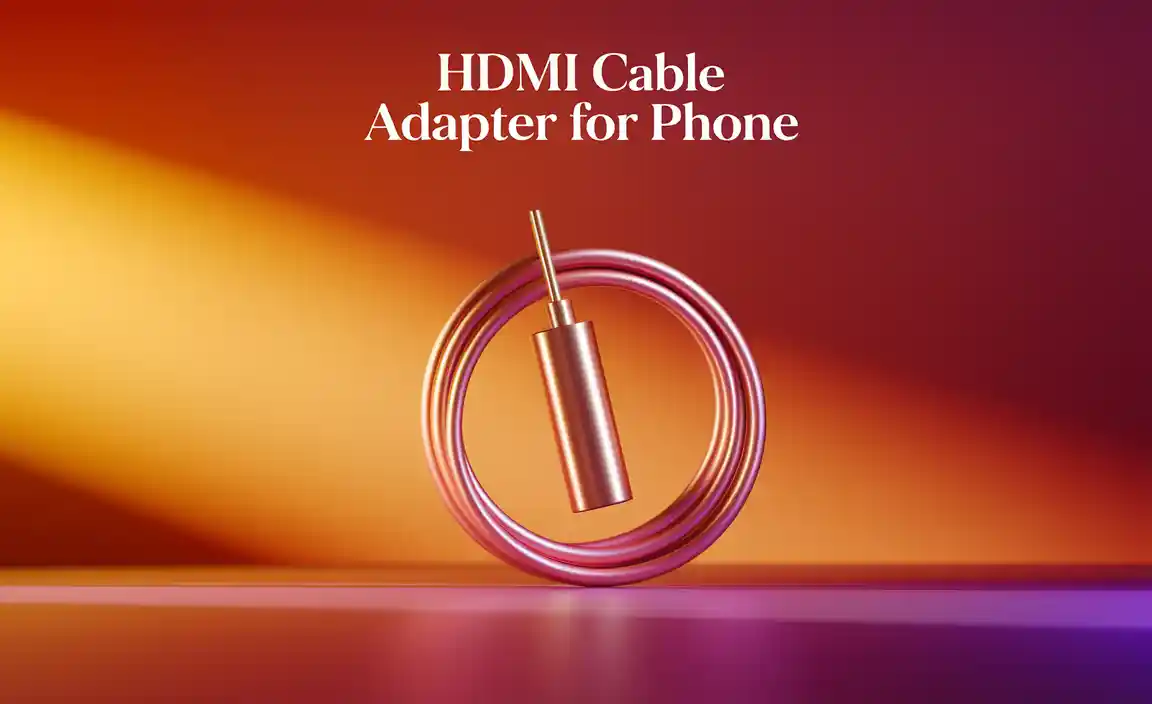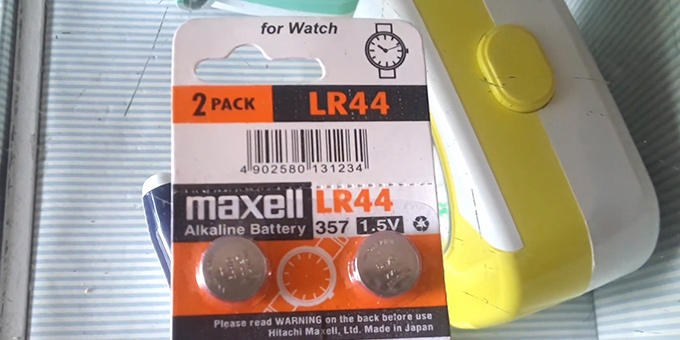Quick Summary: A rechargeable car charger is a portable device that keeps your car battery healthy, especially during periods of inactivity. It’s an easy way to ensure your car starts reliably, preventing common battery drain issues and saving you from jump-starts.
Rechargeable Car Charger: Your Car’s Essential Power Boost
Is your car battery giving you trouble? Does it feel like your car struggles to start, especially after a cold night or a few days parked? You’re not alone! Car batteries can lose their charge over time, and dealing with a dead battery can be a real headache. Thankfully, there’s a simple solution that can keep your car ready to go: a rechargeable car charger. This handy device acts as a power booster just when your car needs it most. Let’s dive into what makes these chargers so useful and how they can save you time, money, and a whole lot of stress.
What Exactly is a Rechargeable Car Charger?
Think of a rechargeable car charger as a smart friend for your car battery. It’s a device you plug into a regular wall outlet to charge up, and then you connect it to your car’s battery to maintain its power level. Unlike older battery maintainers that just trickle charge, modern ones often have smart technology to detect the battery’s needs and deliver the right amount of power without overcharging. This is crucial for extending the life of your car battery and ensuring it’s always ready for that important start.
Why You Might Need One
Car batteries don’t last forever, and several things can drain them faster than you might think. Here are a few common reasons why a rechargeable car charger can be a lifesaver:
- Infrequent Driving: If you don’t drive your car every day, or if it sits for long periods (like during a vacation or if you have a classic car), the battery can discharge.
- Cold Weather: Batteries perform less efficiently in the cold. Cold temperatures make it harder for the battery to crank the engine and also reduce its capacity to hold a charge.
- Short Trips: Making lots of short trips means the alternator doesn’t have enough time to fully recharge the battery between starts.
- Old Battery: As car batteries age, they naturally lose their ability to hold a charge. A charger can help maximize the life of an older battery.
- Parasitic Drain: Sometimes, small electrical components in your car can draw a tiny amount of power even when the car is off. Over time, this can drain the battery.
Understanding Your Car Battery
Before we talk more about chargers, let’s quickly touch on car batteries themselves. Most cars use a lead-acid battery. It’s a pretty robust piece of technology, but it needs to be kept at a certain charge level to function properly. When a lead-acid battery’s voltage drops too low, it can lead to sulfation, a process that can permanently damage the battery and shorten its lifespan. A rechargeable car charger helps prevent this by keeping the battery topped up.
For more information on how car batteries work and their components, you can check out resources like this explanation from the U.S. Department of Energy, which covers various automotive technologies.
Types of Rechargeable Car Chargers
When you’re looking for a car charger, you’ll mostly find a few main types, often called battery maintainers or trickle chargers:
- Smart Chargers/Maintainers: These are the most common and recommended. They have microprocessors that monitor the battery’s state and adjust charging accordingly. They won’t overcharge and are safe to leave connected for extended periods.
- Trickle Chargers: These deliver a very slow, constant charge. They are simple but can sometimes overcharge if not monitored, though they are generally safer than older, non-smart chargers.
- Pulse Chargers: Some smart chargers use pulsing technology, which can help keep the battery’s plates clean and prevent sulfation.
For most drivers, a “smart” or “automatic” rechargeable car charger is the best choice. They take the guesswork out of charging and are designed to keep your battery in optimal condition.
Key Features to Look For
Not all rechargeable car chargers are created equal! Here are some features that make a good charger:
- Automatic Voltage Detection: Ensures it works with both 6-volt and 12-volt batteries (most cars use 12V).
- Multi-Stage Charging: More advanced chargers go through several stages (like analyzing, conditioning, and float charging) to ensure the best charge and battery health.
- Reverse Polarity Protection: A crucial safety feature that prevents damage if you accidentally connect the clamps to the wrong battery terminals.
- Spark Proof Clamps: Prevents accidental sparks when connecting or disconnecting, another important safety measure.
- Weatherproof Design: If you plan to use it outdoors or in a garage that isn’t climate-controlled, a weatherproof unit is a good idea.
- LED Indicators: Simple lights that show the charging status (charging, fully charged, error).
How to Use a Rechargeable Car Charger: A Step-by-Step Guide
Using a rechargeable car charger is straightforward. Always refer to your charger’s manual for specific instructions, but here’s a general guide:
What You’ll Need
- Your rechargeable car charger
- A standard electrical outlet
- The charger’s instruction manual
Step-by-Step Instructions
- Ensure the Car is Off: Make sure your car’s ignition is completely off and all accessories (lights, radio, etc.) are shut down.
- Locate the Car Battery: The battery is usually under the hood, often on one side. Check your car’s owner manual if you’re unsure.
- Identify Battery Terminals: You’ll see two terminals, a positive (+) and a negative (-). The positive terminal is usually larger and might be marked in red. The negative terminal is often marked in black.
- Connect the Positive Clamp: Attach the red clamp from the charger to the positive (+) terminal of your car battery. Ensure a firm connection so it makes good contact.
- Connect the Negative Clamp: Attach the black clamp from the charger to the negative (-) terminal of your car battery. Alternatively, you can connect it to a clean, unpainted metal part of the car’s chassis or engine block, away from the battery. This is sometimes recommended for safety to prevent sparks near the battery itself.
- Plug in the Charger: Connect the charger’s AC power cord into a nearby electrical outlet.
- Select Charging Mode (If Applicable): Some chargers have different modes (like standard, cold weather, or AGM). Choose the appropriate one based on your battery type and conditions. Most smart chargers do this automatically.
- Monitor the Charger: The charger will likely have indicator lights to show its status. Refer to your manual to understand what each light means (e.g., charging, battery full, fault). Smart chargers will often switch to a maintenance mode once the battery is fully charged.
- Disconnecting Safely: Once the charging is complete or the charger indicates it’s in maintenance mode, unplug the charger from the wall outlet first. Then, carefully remove the negative clamp, followed by the positive clamp.
Safety First! Important Precautions
Working with car batteries involves some risks, so it’s vital to follow safety guidelines:
- Wear Safety Glasses: Always wear eye protection to shield your eyes from potential battery acid splashes or sparks.
- Work in a Well-Ventilated Area: Batteries can release flammable hydrogen gas as they charge. Ensure good airflow to prevent gas buildup.
- Avoid Sparks and Flames: Keep open flames, cigarettes, and sparks away from the battery.
- Don’t Smoke While Charging: This is a crucial rule.
- Keep Children and Pets Away: Ensure children and pets are at a safe distance while you are working.
- Inspect Clamps: Make sure the clamps are clean and making good contact with the battery terminals.
- Read the Manual: Different chargers have different features and safety requirements. Always read and follow the instructions provided by the charger manufacturer.
Reputable sources like the National Highway Traffic Safety Administration (NHTSA) offer general vehicle safety tips that are good practice when doing any car maintenance.
Battery Maintenance vs. Battery Charging
It’s important to distinguish between a charger and a maintainer, though many devices combine both functions. A basic charger’s main job is to bring a dead or low battery back to a full charge. A battery maintainer, on the other hand, is designed to keep a healthy battery topped up and prevent it from losing charge over time, especially when the car isn’t being used. Most modern “rechargeable car chargers” are actually sophisticated devices that can both charge and maintain.
When to Consider a New Car Battery
While a rechargeable car charger can help extend the life of your current battery and ensure reliability, it’s not a permanent fix for a dying battery. Here are signs it might be time for a replacement:
- Age: Car batteries typically last 3-5 years. If yours is older, it’s on borrowed time.
- Engine Cranking Slowly: A slow, sluggish crank when you start the car is a major indicator.
- Warning Lights: A battery warning light on your dashboard is a direct signal something is wrong.
- Swollen Battery Case: A bulging or swollen battery case can indicate it’s been overcharged or damaged by extreme temperatures.
- Foul Smell: A rotten egg smell coming from the battery can mean it’s leaking or internally damaged.
If you’re unsure about your battery’s health, most auto parts stores can test it for free.
Charger Comparison Table
To help you visualize, here’s a look at what to expect from different types of charging solutions:
| Feature | Basic Trickle Charger | Smart Car Battery Charger/Maintainer | Portable Power Bank (jump starter) |
|---|---|---|---|
| Primary Function | Slow, constant charge | Smart charging & maintenance | Emergency jump start |
| Use Case | Maintaining minimal charge on stored vehicles | Regularly maintaining battery health, topping up charge | Starting a car with a dead battery immediately |
| Complexity | Very simple, often just clamps and plug | Moderate, often has modes and indicators | Simple to moderate, requires proper connection |
| Overcharging Risk | Moderate (can overcharge if left too long without monitoring) | Very Low (designed to prevent overcharging) | N/A (one-time use for starting) |
| Battery Health Benefit | Minimal, can sometimes be detrimental if overcharged | High, extends battery life and ensures readiness | None (only for immediate start) |
| Cost | Low | Moderate to High | Moderate to High |
Battery Technologies and Chargers
Modern cars often use different types of batteries, and the charger you choose should be compatible. The most common types are:
- Flooded Lead-Acid (FLA): The traditional battery type.
- Absorbent Glass Mat (AGM): These are sealed and spill-proof, often used in cars with start-stop technology or high-demand electronics. They require a specific charging profile.
- Enhanced Flooded Battery (EFB): A step up from traditional flooded batteries, offering better performance for start-stop systems.
Most good smart chargers are designed to handle all these types, often allowing you to select the battery type or automatically detecting it. Always check the charger’s specifications to ensure it’s compatible with your car’s battery.
Comparing with Other Power Solutions
It’s easy to get mixed up between different portable power devices. Here’s a quick look:
- Phone Chargers: Designed for low-voltage, low-amperage devices like smartphones. Completely different from car chargers.
- Power Banks: Portable batteries that store power to charge phones, tablets, and other small electronics. Some larger power banks might have a 12V output, but they are generally not designed for the sustained high current needed to jump-start a car.
- Jump Starters (Portable Power Packs): These are specifically designed to deliver a burst of high amperage to start a car with a dead battery. They are great for emergencies but don’t typically maintain the battery long-term.
- Battery Tender/Maintainer (Rechargeable Car Charger): Its primary role is to keep a healthy battery charged and healthy, preventing discharge when not in use. It can also charge a moderately discharged battery.
A rechargeable car charger is best for preventative care and maintaining battery health, especially if your car sits for periods. For immediate, unexpected dead battery situations, a jump starter is the tool you need.
Frequently Asked Questions (FAQ)
Q1: How long does it take to charge a car battery with a rechargeable charger?
It varies greatly depending on how discharged the battery is and the charger’s amperage. A full charge for a moderately discharged battery can take anywhere from 12 to 48 hours. However, for maintenance, smart chargers will just keep it topped up.
Q2: Can I leave a rechargeable car charger connected all the time?
Yes, if you have a quality “smart” charger or battery maintainer. These devices are designed to safely charge the battery and then switch to a low-level float or maintenance charge to keep it topped up without overcharging. Always check the product manual to confirm.
Q3: Will a rechargeable car charger fix a bad battery?
A good charger can help extend the life of an old battery and ensure it holds a charge better. However, it cannot repair a battery that has reached the end of its lifespan or has internal damage. If a battery is failing, it will need to be replaced.
Q4: Is it safe to use a charger indoors?
It’s best to use chargers in a well-ventilated area, even if it’s indoors, like a garage. Car batteries can release small amounts of hydrogen gas, which is flammable. Ensure there’s some airflow, and keep away from open flames or sparks.
Q5: What’s the difference between a charger and a jump starter?
A charger (or maintainer) slowly replenishes a battery’s charge over time or keeps it topped up. A jump starter provides a high surge of power to start an engine with a dead battery. They serve different purposes.
Q6: Can I use any brand of charger for my car battery?
You should ensure the charger is compatible with your car’s battery voltage (usually 12V) and battery type (e.g., flooded lead-acid, AGM). Most modern smart chargers are versatile, but it’s always wise to check the specifications.
Conclusion
In the world of car care, sometimes the simplest tools make the biggest difference. A rechargeable car charger is one of those tools. It’s not just about convenience; it’s about protecting your investment and ensuring your car is always ready when you need it. By understanding how these chargers work, choosing the right one, and following basic safety steps, you can confidently keep your car battery in top condition. Say goodbye to the frustration of a dead battery and hello to reliable starts, all thanks to this essential power boost.





